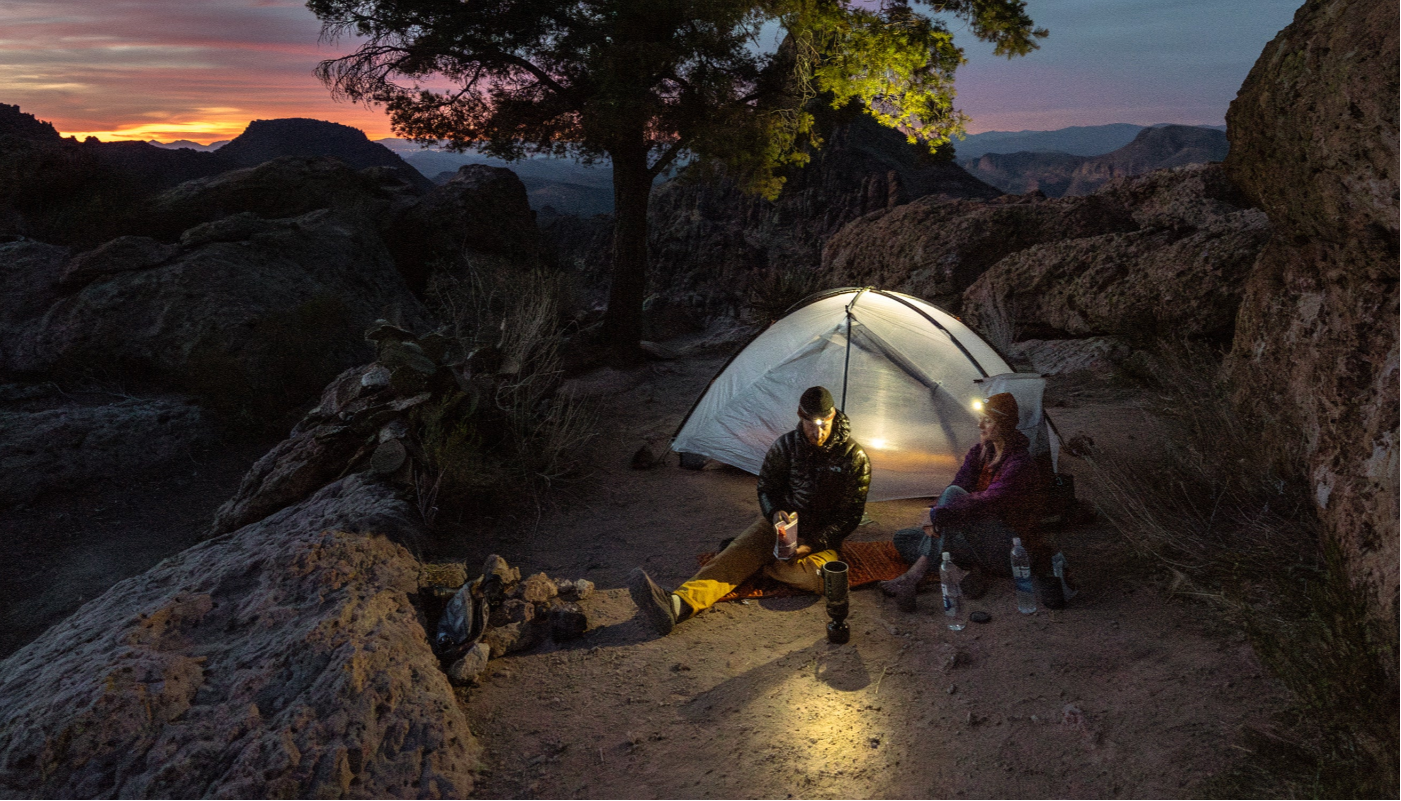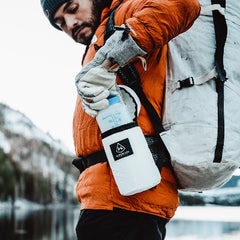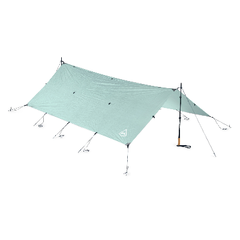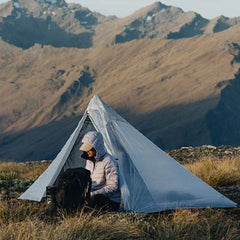Ambassador Bethany Hughes weighs in after 5 months of thru hiking the Americas
The scale at the international flight counter weighed each of our packs, full of everything except food and water, at 10 kilos (about 22 pounds). Planning to mostly thru hike the length of South America over the next three years, going lightweight is a must. Our route has taken us through National Parks and Preserves, and we have often marveled at the bulk of what many visitors carry. They shuffle and trudge, backs bowing under the weight of their packs as they frown at the dirt before their feet while giants such as the Torres del Paine, Fitz Roy and Cerro Norte tower above.

Raised in a Scouting family, backpacking has long been a part of my narrative; lightweight, not so much. I’d never even heard of a baseweight until the night before starting the Pacific Crest Trail in 2010. Hanging my pack from a scale for the first time I thought 58 lbs. wasn’t bad. By the end of that trail my full weight was around 35 lbs.
But going lightweight has been natural and necessary development in the transition from backpacking to thru hiking. For Neon and myself, it has become essential, and being out of reach of easy replacement gear, durability is also an important component. It is a question of balance and simplicity, and it’s something we think about every day. We hike light for the practical reason of sustaining 20-40 kilometers a day over years to come.
Things to Consider on a Multi-National, Multi-Year Trek:
It’s really important that we be able to adapt our gear on a a big adventure like this. These are the most important things we considered:
Are our packs big enough to contain food supplies, which sometimes must last us up to 10 days in between villages? Pack size is important to consider. I have this theory that we as humans will fill to capacity whatever space we are given. Too big and you’ll carry too much, too small and you’ll be under prepared. The 3400 Southwest gives us the capacity we need.
Is the fabric of our packs heavy enough and will it hold up to the kind of terrain we’ll encounter? Southern Patagonia doesn’t have many hiking trails, and we’ve seen a lot of bushwhacking this first season. The 150d Dyneema®/Poly Hybrid fabric of these thru hiking packs work very well fighting through fields of thorny calafate and being passed through ancient barbed-wire fences.
Do our packs have adjustable features that can change as our bodies change over the course of such a long hike? Being able to adjust our own stays, use the straps on the body of the pack to shift the weight of heavier loads and move the sternum strap as high or low as needed considering a woman’s shape allows us to adapt and be flexible.
Does our shelter provide ample space for us and our gear, while still providing protection from the elements? So far our UltaMid 2 has withstood Patagonian wind and rain, and its unobtrusive color has provided another layer of protection for which we have been mightily grateful.
Do we have sufficiently waterproof clothing? Carrying a tough rain jacket is a must in Patagonia. I was also really happy to have a pair of fly fisherman’s mitts. They helped keep my hands dry(er) while doing camp chores and allow me to use my fingers for finer tasks.
What items serve multiple functions? Being on the trail for this length of time also means learning to use old things in new ways. I have enjoyed finding ways to reuse things most might consider disposable. When my water bladder failed during a rainstorm I replaced it with a 1.5 L Fanta bottle (it connected fine to the hose), and I’ve been using that ever since. A re-zipable tortilla bag, an old Nutella jar, and a plastic soda bottle have lasted this entire season carrying foodstuffs. While you need core gear of good quality, it is more important that the rest of your kit be adaptable. Try not to overlook the simple stuff.

Gear Changes:
Neon, and I planned carefully for this trek (my complete pack list is at the end of this post). Between our combined 15,000 miles of long distance hiking, we didn’t bring too much excess gear. We have a trunk of replacement gear we’ve been punting along via the Chilean bus systems; it enables us to switch out gear as the seasons shift. Recently, we dropped our ice axes, crampons and water purifier.
As well, I’ve added a few things, including a pocket notebook. There isn’t much in the way of maps through most of the regions, just the old gauchos’ knowledge, so writing that down or having something where they can draw us a “map” has been important. It is also helpful for capturing quotes from people, making town “to do” lists and many other miscellaneous jots. We’ve also added more socks. But, the biggest shift we made (and which will be a year-round change) was dropping a heavy manufactured stove and fuel bottle for a cat-food can stove and a plastic bottle of denatured alcohol. That saved us a lot of weight, and the fuel is more affordable.
Unexpected Benefits of Ultralight:
Our ultralight gear has given us an unexpected advantage; it has brought us into a small and conscientious group of travelers. Whereas most people wonder at the small size of our backpacks and then question whether we have enough gear; those who know lightweight thru hiking and backpacking drop by to say hi and to compare notes. For example, at a campsite in Chile Chico, we met Dylan who proudly showed us the Windrider Pack he has been using for five years of international adventuring. Among many other journeys, he put it through a 40-day bushwhacking trip in Canada and still carries it with gusto.
Joining this growing niche of backcountry, thru hiking travelers has been our biggest transition in terms of gear in this first hiking season of Her Odyssey. By using Hyperlite Mountain Gear’s shelter and packs, I dropped my overall weight by 6 lbs., and by refining my other lightweight systems, I’ve dropped another 3 lbs. In sum, I’ve created more space for conscientiousness and simplicity, which, honestly, isn’t that what we all seek in the outdoors?






















